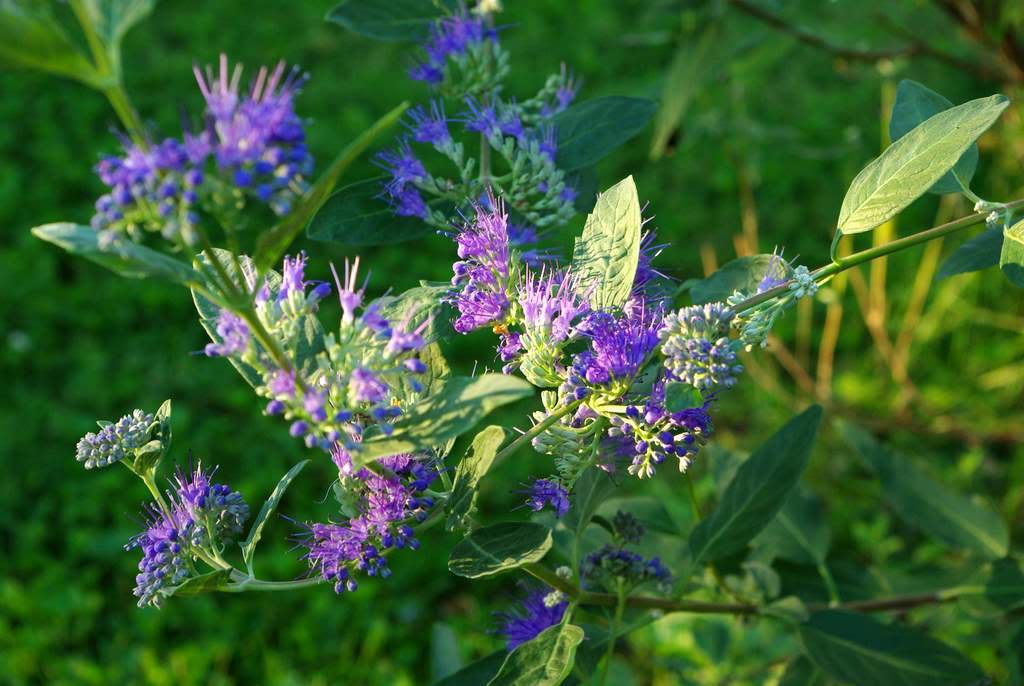Caryopteris
One of the best late-season bloomers in my garden has always been Caryopteris, or "Blue Mist Spirea". I planted it five or six years ago, probably as an impulse buy during a trip to the nursery around this time of year.
What I didn't realize at the time is that flowering shrubs will often produce seed, resulting in even more plants over time.
That's what happened in my garden. I started with a few plants of Caryopteris clandonensis 'Dark Knight', and now I've got seedlings from those original plants.
I'm not sure if the seedlings are as vigorous or well-formed as the original plants were, as these guys seem to need quite a bit of sun to thrive, and the areas in which I have them planted are starting to get more shade each year.
Plus these seem to be pretty short-lived shrubs, or they succumb to insects or diseases fairly readily. That's not to say they're hard to grow or weak plants, but it seems like every year I have to cut down either a full plant or a good section of one because it has died. Maybe they're not reliably cold-hardy here in St. Louis (zone 6).
I do cut these back pretty hard in early spring, as the new growth is desirable -- it flowers on "new wood", although I've never left any significant "old wood" so I'm not sure if it flowers on it too. Probably not.
Bees love these flowers! They do have a nice, light fragrance. Nothing that fills the air, but when you get close you notice it.
I'm struggling to capture a photo of the whole plant, as those images don't look very interesting:
It's the flowers that really impress with this plant, so you definitely want to get close to them and have a good look.
If you've got a sunny spot in your garden that could use a shrub that gets 3-4 feet tall and wide, give Caryopteris a try. You won't be disappointed!
I worked on several projects in the garden this weekend, so those posts are coming up over the next few days. Oh, and two more things:
MoleMeter 2010 mole capture count: 12, 13
I've never really looked at the mole's back feet before:
The front feet are so large and powerful, it's a little shocking to see these scrawny little chicken feet back there, isn't it?














